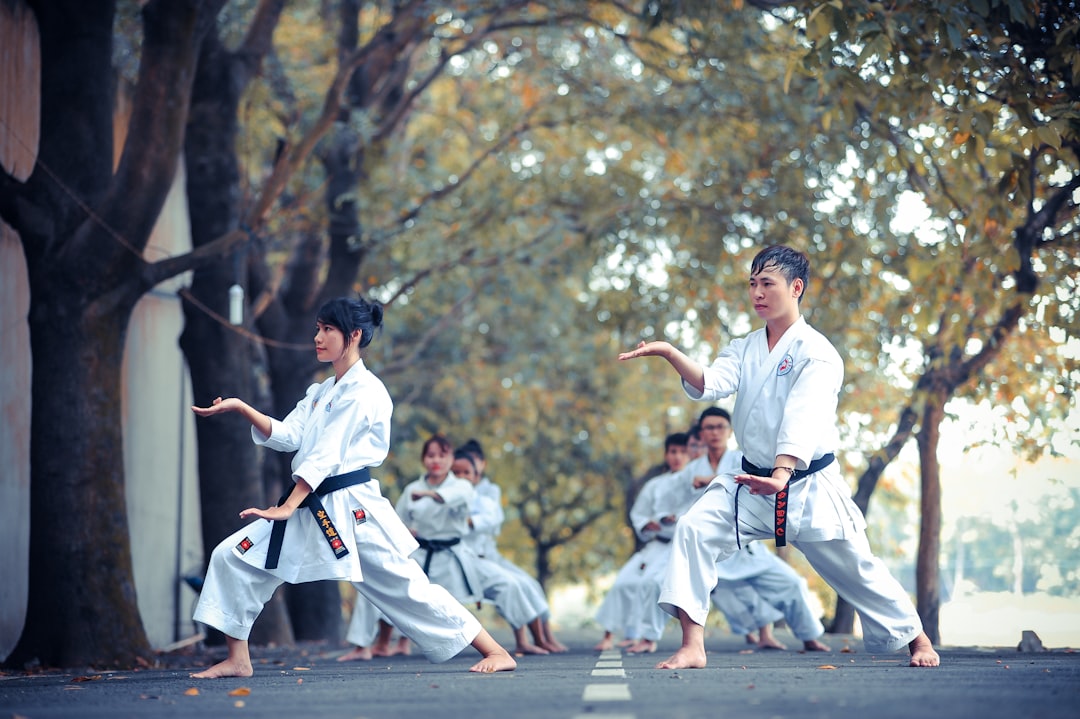Choosing the right attire is essential for effective karate training at home. A traditional karate gi—a white jacket, trousers, and obi belt—serves both a practical and cultural role, enhancing your performance and comfort during exercises. It's important to opt for a lightweight and breathable gi that allows for flexibility and agility without restriction. The fit of the gi should be just right, neither too tight nor too loose, to avoid hindering your movements. As you advance in your karate practice, the color and style of your belt will reflect your ranking. For home training, selecting a lighter fabric than what's typically used in dojos can offer greater comfort. When purchasing a gi for home use, consider brands that specialize in gis tailored for individual needs, ensuring you get the best out of your practice sessions. In essence, the right karate gi and belt will not only honor traditional martial arts principles but also contribute to a more focused and rewarding training experience at home.
Embarking on a journey in Karate requires the right attire to ensure proper form and respect for the martial art. A key element is the Karate uniform, commonly known as a Gi. This article delves into the specifics of selecting the ideal Gi for training Karate at home. Whether you’re a beginner or an experienced practitioner, understanding what constitutes a suitable Gi is essential for maximizing your practice. From fabric considerations to cut and fit, we’ll guide you through choosing the right Gi for your home Karate regimen.
- Karate Uniform Essentials: What to Wear When Training Karate at Home
- Choosing the Right Gi for Your Home Karate Practice: A Fighter's Guide
Karate Uniform Essentials: What to Wear When Training Karate at Home

When training karate at home, the attire you choose can impact your performance and comfort. A karate uniform, often referred to as a gi, is not just a traditional piece of martial arts apparel; it serves a practical purpose as well. The gi typically consists of a jacket, trousers, and a belt, known as an obi, which all need to be white for standard training. It’s essential to opt for a gi made from a lightweight, breathable fabric that allows for ease of movement and comfort during your exercises. Does the fabric of your chosen gi hold up under active movements, ensuring you remain agile and unrestricted? A high-quality gi, constructed with durability and flexibility in mind, will not only enhance your training experience but also last longer. Additionally, make sure the fit is appropriate; a gi that’s too loose may hinder your mobility, while one that’s too tight could be uncomfortable and limit your range of motion. Do you feel restricted or limited in your chosen attire? If so, it might be time to consider a different size or brand to ensure optimal performance during your karate training at home. Remember to wear the appropriate belt as well; white belts are standard for beginners, but as you advance, you may earn the right to wear colored belts that signify your rank. What’s more, the right gi and belt combination will not only aid in your training but also prepare you for any future dojo settings should you decide to train elsewhere.
Choosing the Right Gi for Your Home Karate Practice: A Fighter's Guide

When setting up a home dojo for training karate, selecting the appropriate gi is crucial to ensure comfort and adherence to traditional practices. A gi, which is the term for a karate uniform, is not just a garment but a symbol of respect for the martial art. It’s important to choose a gi that is well-suited to your home practice environment and provides flexibility for various techniques. Do you know what characteristics to look for in a gi for training at home? For starters, consider the weight of the fabric. Heavy cotton is typically used in traditional dojos, but for home practice, many fighters opt for lighter, more breathable materials that are less formal. Additionally, the right fit is essential; a gi should not be too tight or too loose, allowing for ease of movement during kata and kumite practice. How does one find a quality gi that meets these needs? Look for reputable brands that offer a range of gis designed specifically for home training. They often provide options in different weights and cuts, ensuring you can find the perfect match for your individual needs. Whether you’re practicing choku gerki or kata, having the right gi will enhance your training experience and help you stay focused on mastering the techniques of karate.
In wrapping up our exploration of karate training, a key aspect for anyone practicing at home is selecting an appropriate gi—the traditional karate uniform. This attire not only aligns with the discipline’s rich history but also offers functionality and comfort for your routine. By understanding the essential characteristics of a quality gi and following the guidelines provided in “Karate Uniform Essentials: What to Wear When Training Karate at Home” and “Choosing the Right Gi for Your Home Karate Practice: A Fighter’s Guide,” you are well-equipped to make informed decisions. Whether you’re a novice or an experienced practitioner, training karate home requires the right gear to ensure your practice is both effective and respectful to the art. Remember, the gi is more than just clothing; it’s a symbol of your commitment to the martial way.
